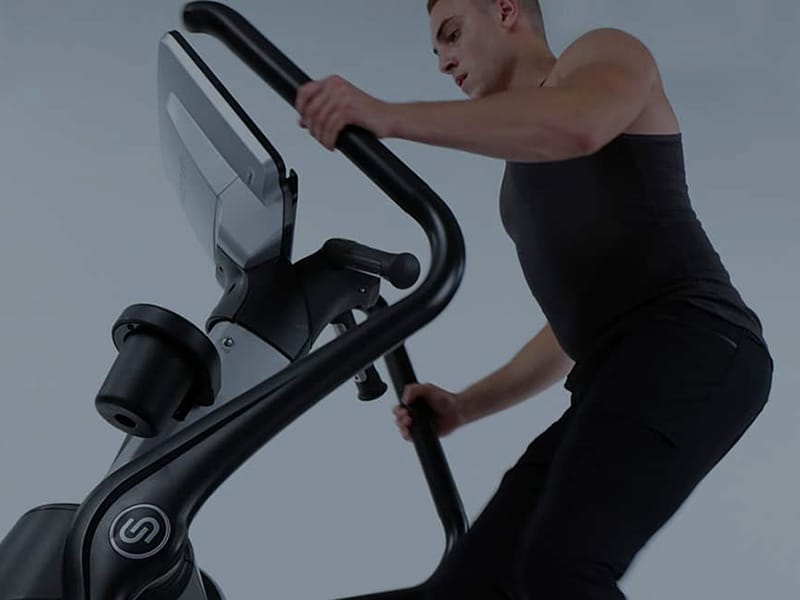
Fitness Training: The Five Elements of A Well—Rounded Routine
Whether you’re a novice or a seasoned professional, a well—rounded fitness training program is essential. Intenza Global Wellness Ambassador Rosanna Queirolo shows us how.
Individually, different components of exercise all have their purpose and your overall exercise plan should include several elements which serve as your blueprint for developing a healthy exercise routine. What does a well—rounded fitness routine include? In short, it balances five pillars: aerobic fitness, strength training, core strengthening, balance training and flexibility and stretching.
Aerobic Fitness
Cardio, or aerobic exercise, is foundational to most fitness training programs and includes any physical activity that uses large muscle groups and increases your heart rate. It causes you to breathe faster and more deeply which maximises the amount of oxygen in your blood. The better your aerobic fitness, the more efficiently your heart, lungs and blood vessels transport oxygen throughout your body and the easier it is to complete routine physical tasks. Aerobic exercise is probably the most frequently participated in aspect of fitness due to its wide—ranging benefits and some examples of this type include walking, jogging, running, cycling or stairclimbing.
Running, outdoors or in the gym, is a great way to help improve cardiovascular health which accounts for its popularity. Offering a safe and extremely stable running platform, Intenza treadmills offer the advantage of preset workouts or the option to vary speed and incline to focus on specific goals. And with a built—in heart rate receiver, which finds your pulse through the skin of your hands, the estimated number of times your heart is beating per minute can also be monitored.
Strength Training
Strength training is about increasing your muscle strength and endurance. This helps to improve your ability to do activities of daily living (ADL) thus extending your independence as you get older. In addition to being elastic, your muscles should be capable of applying force and manage movement and just like aerobic exercise, weight—bearing exercises also play a crucial role in your overall health. Strength is enhanced with weight—esistance exercises. Lifting weights can increase muscle strength and bone density, tone muscles, increase metabolism and even help manage your weight. Examples of strength training include resistance machines, hand—held weights resistance bands or lunges and squats etc.

Core Strengthening
The muscles in your abdomen, lower back and pelvis, known as your core muscles, help to protect your back and connect upper and lower body movements; and in building up this muscle group, you are helping to train and build your muscles in a way that allows the body to move more efficiently whilst conducting daily activities. Therefore, core strength is a key element of a well—rounded fitness training program. A core exercise is any movement that uses the trunk of your body without support, and examples of core strengthening include abdominal crunches, planks, Pilates, hanging leg raises, oblique reaches or fitness ball exercises.
Balance Training
Balance exercises are those which strengthen your core area to help you stay upright and the multiple benefits of these exercises include improving stability, increasing fall reaction time, decreasing your risk of falling and decreasing your risk of injury as a result of a fall. Especially important for older adults, as balance tends to deteriorate with age, balance training is essential for longevity of movement and continued independence. Examples of balance training include balancing on one leg, yoga or Pilates

Flexibility and Stretching
Flexibility refers to the range of motion you have around a given joint and it’s important at any age because it plays a role in unhindered movement— it can affect your balance, coordination and agility and without flexibility, all other fitness goals are not only more difficult to achieve but less sustainable over time. Muscles that lack flexibility do not move as well, which can restrict the movement of our joints therefore maintaining a full range of motion through your major joints can also reduce the likelihood of injury.
As an important aspect of physical fitness, it’s a must to include flexibility and stretching activities in any fitness program therefore it’s a part of your workout you definitely don’t want to skip. Done at the end of every workout, when your muscles are warm and receptive to stretching, the purpose is to relax the body and help it return to pre—exercise conditions. Stretching can help increase flexibility, increase circulation and improve posture. It can even help relieve stress and tension.
Major muscle groups that are important to stretch include your hamstrings, chest, shoulders, arms, quads and back. Examples of stretching exercises include runners stretch, standing side stretch, forward hang, low lunge arch and the seated back twist and activities such as yoga also promote flexibility.
Whether you create your own fitness program at home, or work with a personal trainer in the gym, your exercise plan should include aerobic fitness, strength training, core strengthening, balance training and flexibility and stretching. It isn’t necessary to fit each element into every workout session, but regularly including them across your fitness regimen can promote health and fitness for life. #howfitnessshouldfeel

Brand stories
The Intenza Elliptical Trainer: Perfect For (Kick)starting Your Fitness Routine
Working out never felt so smooth!

Brand stories
7 Tips for Easing Back to the Gym After a Break
It might be tempting to simply try and pick up where you left off, but doing too much too soon is likely to result in in...

Brand stories
Aesthetics Fitness Club GOLD: A space that goes beyond a traditional gym
Mind, body and soul the extremely well—equipped, ultra—stylish Aesthetics Fitness Club GOLD caters for their members’...



